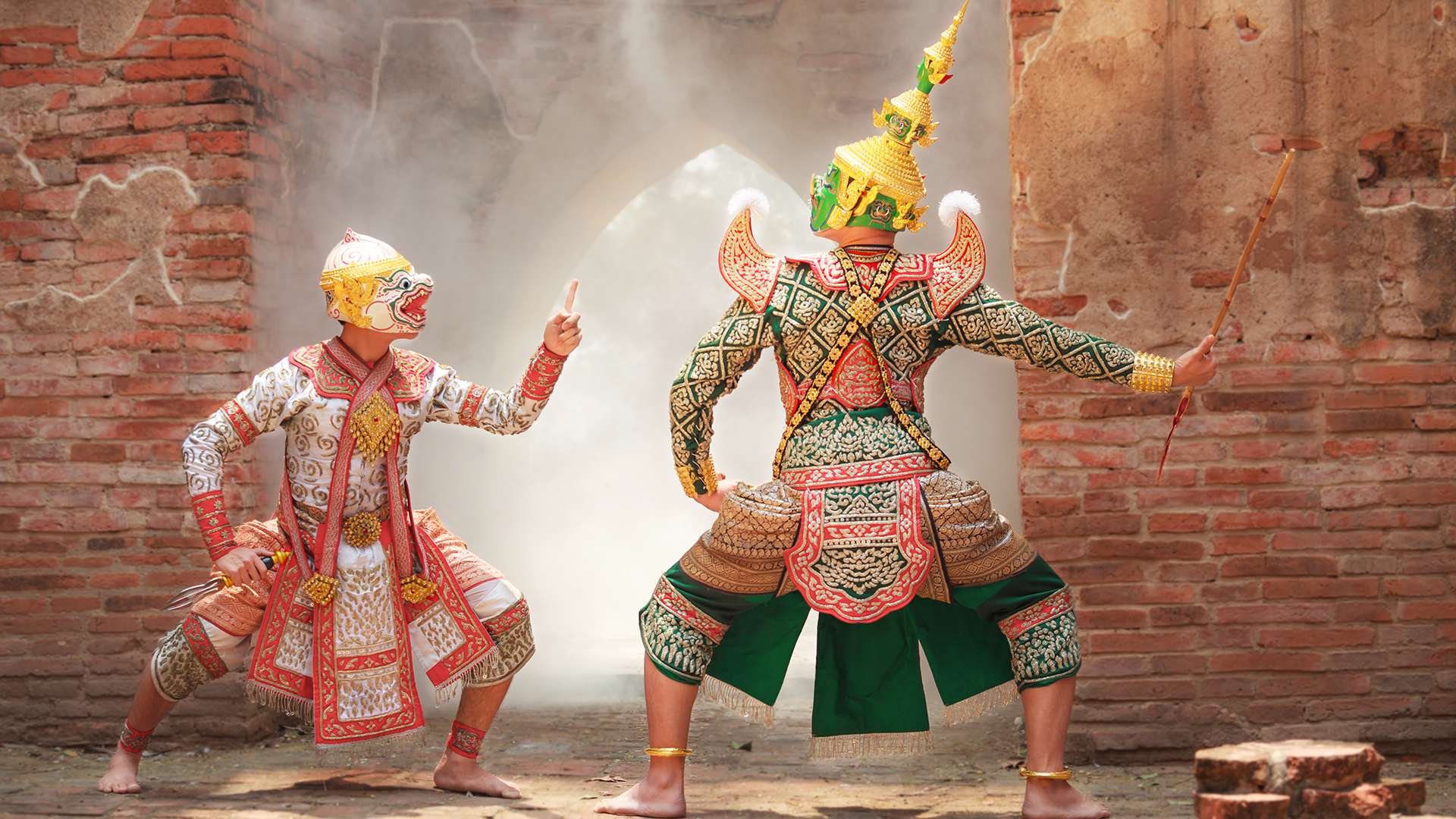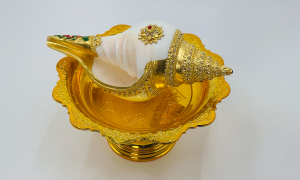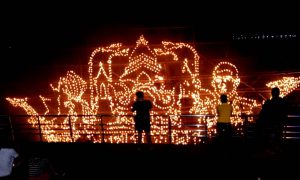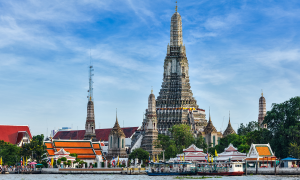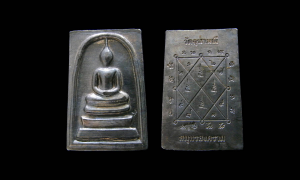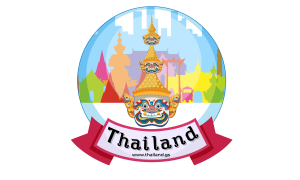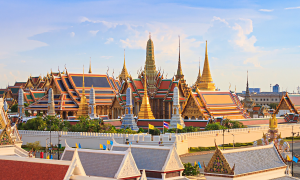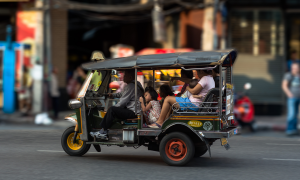Khon is one of Thailand’s most distinguished and spectacular performing arts, blending dance, drama, music, and literature into a single grand performance. Known for its elegance and majestic beauty, Khon has been performed since the Ayutthaya period and remains a symbol of Thailand’s cultural heritage.
In Khon, performers wear elaborately crafted masks representing gods, demons, and monkeys from the Ramakien (the Thai version of the Ramayana epic). Unlike ordinary plays, the performers do not speak. Instead, narrators and singers provide dialogue and verses, while the dancers express emotion and action through graceful, stylized movements. The performance is accompanied by the powerful sounds of the piphat orchestra, creating a rich and dramatic atmosphere.
Costumes are lavish, adorned with intricate patterns, gold decorations, and sparkling details. The martial movements, ritual gestures, and refined choreography highlight both strength and grace, making Khon an unforgettable visual experience.
Today, Khon is performed on important occasions such as royal ceremonies, cultural festivals, and national events. Recognized by UNESCO as an Intangible Cultural Heritage of Humanity, Khon continues to inspire audiences worldwide as a living treasure of Thailand’s artistry.
A Khon performance is not just a show—it is a journey into the heart of Thai tradition, where history, mythology, and craftsmanship unite in a breathtaking spectacle.
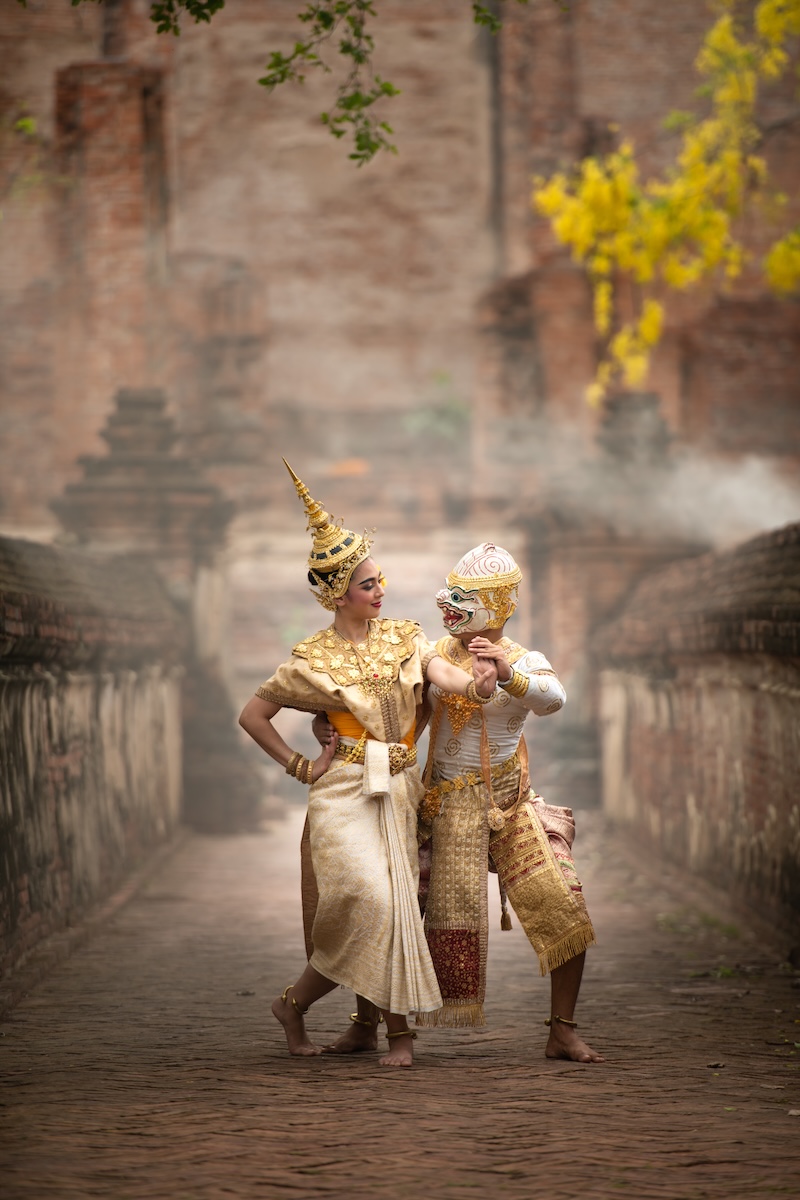
Khon, Is a classic Thai dance in a mask. This is Hanuman expressing his love to Miss. Suphan Matcha. An episode from the Ramayana The greatest Thai literature of Thailand
Khon is a traditional Thai classical masked dance drama, regarded as one of the highest forms of performing arts in Thailand. It is renowned for its elegance, grandeur, and refined beauty. The performance follows the stylized movements of lakhon nai (classical Thai dance-drama), with added characters and adapted musical compositions. Although it narrates stories in sequence like a play, it is not categorized as lakhon but rather distinctly as Khon. Its origins date back to the Ayutthaya period, as recorded by Simon de La Loubère, the French envoy to King Narai, who described Khon as a performance featuring dance movements accompanied by fiddle and various musical instruments, with masked performers wielding weapons.
Khon is a synthesis of multiple Thai art forms, including literature, dramatic arts, dance, music, and craftsmanship. It incorporates elements from the ancient ritual play Chak Nak Duek Dam Ban, as well as martial postures from krabi-krabong (traditional Thai sword fighting). The performance combines narration, dialogue, stylized recitation, and musical accompaniment from the piphat ensemble. A hallmark of Khon is the use of elaborate masks (hua khon), covering the head and neck, with openings at the eyes, designed to express the character through graceful movement rather than facial expression. Each mask is crafted according to the role—giants, monkeys, deities, or heroes—and decorated with lacquer, gold leaf, and glass inlay.
In earlier times, even the principal roles of gods and heroes wore masks, but later adaptations allowed them to perform without masks, using natural facial expressions like in classical plays, though costumes remained elaborate. Traditional costumes often featured two contrasting colors—one for the torso and another for the sleeves—symbolizing armor, decorated with intricate patterns such as floral or diamond motifs. Monkey costumes bore spiral designs representing fur. Storytelling is conveyed through two vocal styles: phak (narration) and chara (dialogue), composed in classical Thai verse. Performers do not speak themselves; instead, narrators and singers provide the voices, supported by a chorus and the piphat orchestra.
Today, Khon is most often performed in episodes from the Ramakien, the Thai version of the Ramayana epic. It remains a symbol of Thailand’s artistic heritage and continues to be performed in royal ceremonies, state functions, and traditional festivals, overseen by the Fine Arts Department as a treasured cultural legacy


